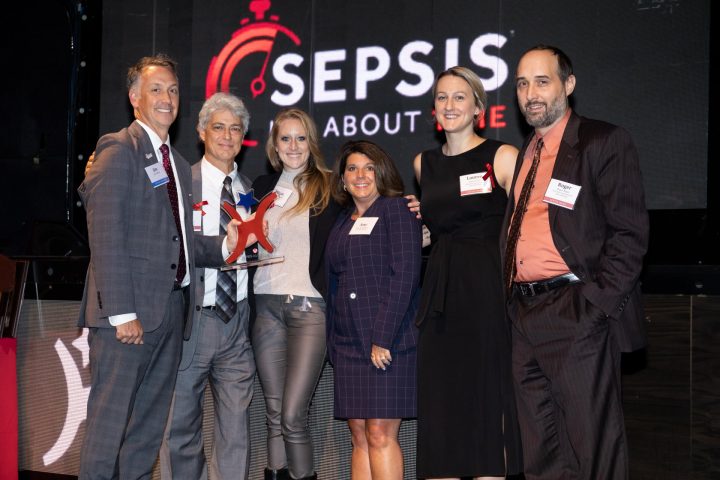
Jillian Thibault is a sepsis survivor. She knows full well the intricacies of this lethal condition. She’s learned the all-too-familiar signs of its onset and progression of symptoms. And she knows how to advocate on her own behalf for appropriate care, in large part because she’s battled sepsis, recovered from it, and lived through it — many times.
HCA was truly honored to have Jillian, a Capital Region resident, join us for the Sepsis Heroes award ceremony earlier this month in New York City, where Sepsis Alliance recognized HCA’s “Stop Sepsis at Home” campaign with one of five national awards. At the heart of HCA’s campaign is an in-home screening tool and training protocols to guide home care clinicians on the detection of sepsis in the home care setting, saving lives, and providing nurses with the kind of clinical observation focus that can help people with chronic conditions, like Jillian’s, beat sepsis.
Jillian’s story
Jillian began to experience chronic bouts of sepsis four years ago because a severe medical condition affecting her digestive functions — gastroparesis — requires daily infusions of intravenous nutrition and a central venous access point that is prone to infection, a “breeding ground for bacteria,” she says.
Infection-induced sepsis has brought Jillian to the hospital many times for urgent medical attention — occurring so often that she’s become immune to some broad-spectrum antibiotics which are necessary to fight sepsis.
“I understand my body so well that I know when sepsis is starting even before my body shows acute signs,” Jillian says, telling of the many times where she’s had to persuade hospital staff that sepsis is occurring, even if the blood tests don’t yet show it. “Unfortunately, this knowledge is due to experiencing many episodes of sepsis,” she says, describing her survival from kidney and liver failure as well as endocarditis, an infection of the inner lining of her heart, “as a direct result of sepsis.”
She adds: “It’s a blessing and a curse” to know the signs so well, yet mainly because of repeat experiences.
Jillian and her family have come to immediately recognize the pathway of symptoms that Jillian calls the “sepsis storm”: confusion, forgetfulness, dizziness, extremely sore muscles and joints, and rigor chills which “test your physicality on every level,” she says. By the time Jillian gets to the emergency department, she may typically have a temperature of about 103 degrees and a fast-sinking blood pressure; “my body feels like it is on fire.”
“If I didn’t have these prior episodes or knowledge of the sepsis storm” every time it happens, “I would be worse off, if not dead,” she says.
Home care’s role
A home care nurse from the Visiting Nurse Association of Albany has been working with Jillian to assist with IV treatment monitoring, checking vital signs and providing a set of eyes and ears for sepsis risk guided by HCA’s sepsis screening protocols.
“Meghan has been a pivotal point in my care,” says Jillian of her nurse, and she “has taught me more than is probably necessary.”
Perhaps most of all, experience is the best teacher. Jillian, with support from her home care nurse and loved ones, has learned to self-observe for symptoms of sepsis and to ask intently for services or interventions that her own experiences tell her are necessary. Not all individuals have this “blessing and a curse,” as she calls it. Jillian emphasizes that the training of nurses, doctors and other clinicians, no matter what setting, has often been uneven, inconsistent and in need of evidence-based improvements, which is what HCA seeks to accomplish with its Stop Sepsis at Home program.
“Using something such as the ‘sepsis tool’ I believe is a huge step in the right direction,” Jillian adds. “It’s a proactive measure that is so necessary in home care nursing.”
Sepsis legislation
HCA’s sepsis screening tool is being progressively adopted by home care agencies throughout New York State; but, as Jillian’s story shows, more training is needed, more support is needed for electronic health records integration and other infrastructure improvements, along with better coordination across all health care programs, which will, altogether, save lives and provide a system of expertise to help individuals fight this condition.
We thank the Legislature for supporting a bill, which does this (S.1817-Gustavo Rivera/A.3839-John McDonald), and we urge all who read Jillian’s story to express in the strongest voice possible support for Governor Cuomo signing this bill into law as soon as it reaches his desk.



